Why the Most Dangerous Kind of Air Turbulence Is Getting Worse—and How Airlines Are Handling It
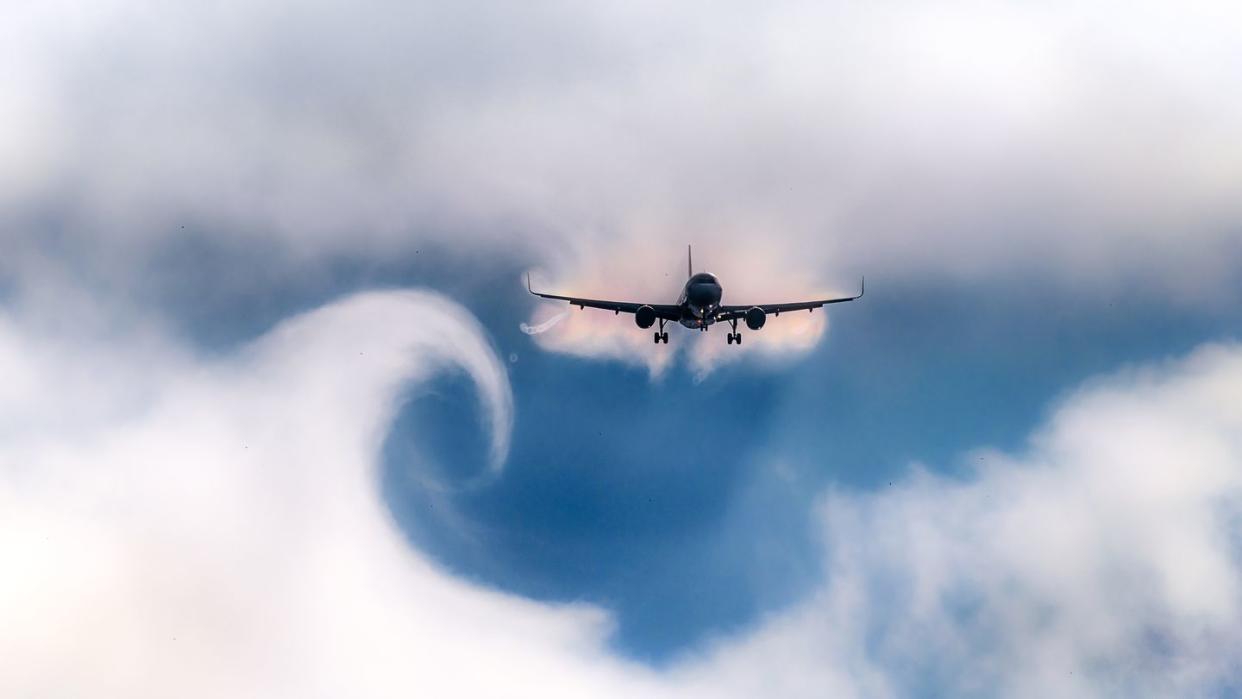
"Hearst Magazines and Yahoo may earn commission or revenue on some items through these links."
One of the more common in-flight mishaps to garner headlines (now that screaming about wearing a mask is mercifully behind us) is when a plane encounters an intense bout of turbulence. Shaken passengers tell an awaiting camera crew about the sudden jerk, the subsequent moment of weightlessness, and the unfortunate injuries and hospitalizations that follow. Thankfully, very few of these accidents result in death—National Transportation Safety Board data says less than 40 passengers have died due to turbulence-related accidents since 2009.
But there is one small problem: these nasty, yet periodic episodes of turbulence are becoming, well, less periodic.
In fact this past June, scientists from the University of Reading concluded that severe clear-air turbulence (CAT), arguably the most insidious of the bunch, has increased 55 percent since 1979 over the North Atlantic. And yes, the culprit is that unending conveyor belt of bad news called climate change.
“We find clear evidence of large CAT increases in various places around the world at aircraft-cruising altitudes since satellites began observing the atmosphere,” the paper reads. “Our study represents the best evidence yet that CAT has increased over the past four decades, consistent with the expected effects of climate change.”
So what exactly is turbulence, how is a warming world making it worse, and what does this mean for the future of air travel?
The Four Turbulences of the Air Travel Apocalypse
Earth’s atmosphere is a roiling sea of wind shear, jet streams, and thunderstorms that, mixed together, can wreak all kinds of havoc. So it probably comes as no surprise that turbulence also comes in several meteorological flavors known as mountain wave, near-cloud, convective, and finally clear-air turbulence. A variety of turbulence during takeoff and landing can also occur, which frequently involves crosswinds or a plane’s vortices (also called wake turbulence), but these four main turbulences are the ones often found at cruising altitude.
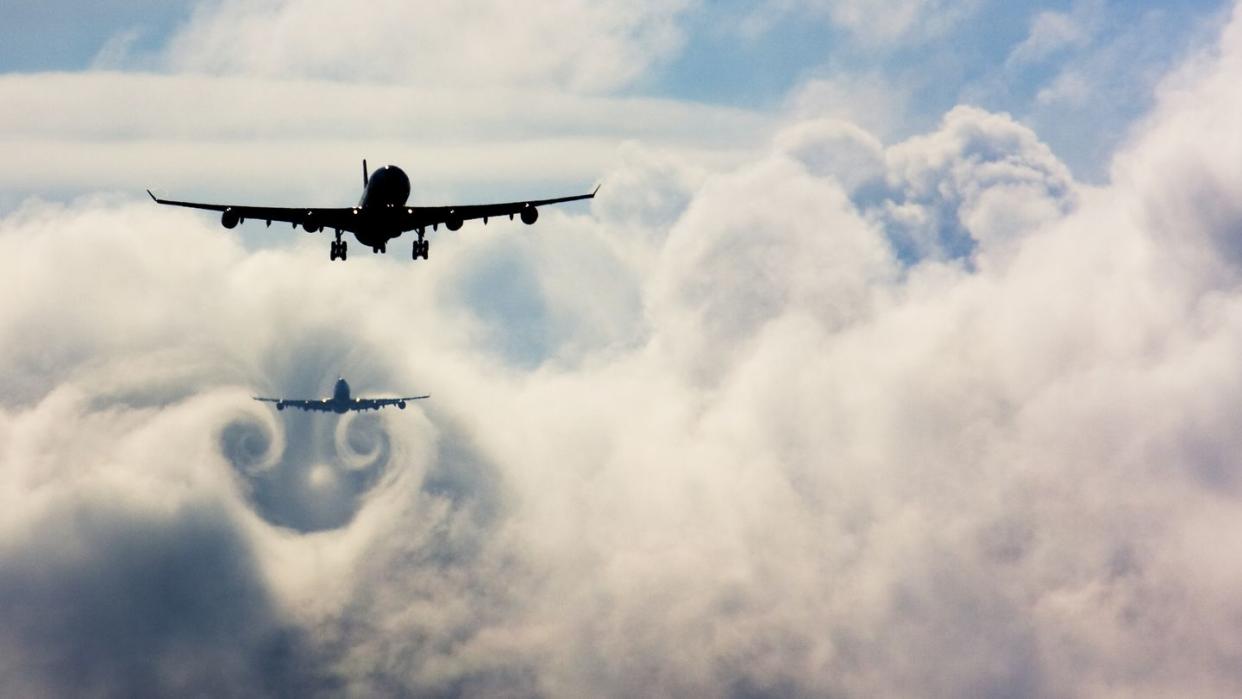
The names of these various wind phenomena hint at their function. Mountain wave turbulence (sometimes called “mechanical” turbulence) occurs over mountain ranges when air is effectively pushed up over immense rocky terrain, which can create dangerously windy conditions. Convective, or thermal, turbulence is found inside thunderstorms (also known as convective clouds, as warm rises inside a cooler column of surrounding air), and near-cloud turbulence forms near the outer edge of thunderstorms. While clear-air turbulence is also etymologically comprehensive—it is indeed turbulence that appears in clear air—it’s a bit more complicated than the other forms because, frankly, you can’t see it.
“This issue with clear-air turbulence is that you could have a flight route that says there isn’t going to be much turbulence…but it’s basically undetectable to onboard radar equipment,” Isabel Smith, a PhD researcher at the University of Reading who uses high-resolution climate models to predict increased turbulence, tells Popular Mechanics. “There’s no indication that it’s about to hit you, so passengers can suddenly get struck by turbulence, meaning they might have their seat belts off, they’re walking around, and then they get thrown…that’s why it’s such a dangerous type of turbulence.”
This sudden mid-air jolt is caused by wind shear created by the jet stream, specifically the polar front jet stream in northern latitudes. This jet stream sits at around 30,000 feet above the surface, and it (and all other jet streams) exists because of temperature differences between polar and subtropical regions. This river of wind blowing west to east flows through the tropopause, the boundary between the relatively tempestuous troposphere and the adversely calm stratosphere. Because these winds can sometimes reach speeds up to 200 mph, airlines take advantage of these tailwinds when flying eastward to save both time and fuel.
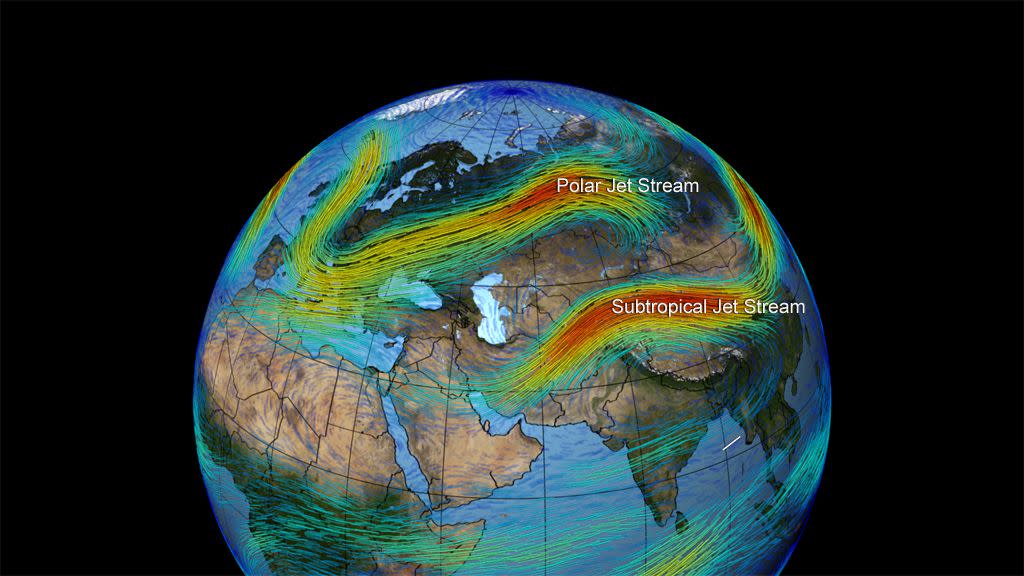
But like any terrestrial river or ocean, the jet stream also produces waves, and it’s these waves of air that create the phenomenon that unlucky airline passengers experience as sudden and unexpected clear-air turbulence.
“These are like ocean waves, but where ocean waves move horizontally, these waves move in three dimensions, especially vertically,” Ramalingam Saravanan, professor and department head of atmospheric sciences at Texas A&M University, tells Popular Mechanics. “As ocean waves break when they reach the beach, these waves can also break when they’re going up.”
So when fast-moving air in the jet stream meets slower-moving air both above and below it, the vertical wind shear can create turbulent conditions without even a cloud in the sky. Seasons can also play a role as higher winds in winter and increased temperature gradients during the summer can also increase instances of CAT.
While being tossed around in a tin can with wings doesn’t sound like a fun (or particularly safe) time, there is some good news when it comes to clear-air turbulence—it’s relatively easy to escape these surprisingly frenzied winds.
“The good thing about clear-air turbulence is that it’s like a big pancake in the sky—it’s very wide but it’s very thin,” Smith says. “So pilots can quickly ascend and get out of it quite efficiently, it’s just that initial hit that can be quite dangerous and unfortunately quite deadly in some instances.”
Rising Temps, Rising Turbulence
As humans continue to pump carbon dioxide into the troposphere, global average temperatures are slowly on the rise, bringing with it stronger storms, longer droughts, and increased flooding. This growing meteorological chaos is also being felt at cruising altitude.
Because the jet stream is sandwiched between the warm (and getting warmer) troposphere and the cool (and getting cooler) stratosphere, the increasing temperature differential means increasing wind shear. While climate change is actually decreasing wind shear in the troposphere as temperature differentials decrease, the opposite is true for the lower stratosphere, which is where airplanes fly to avoid atmospheric drag.
“We have global warming in the troposphere, but we have global cooling in the stratosphere,” Saravanan says. “An increase in carbon dioxide cools the stratosphere, and it does it in such a way that it increases vertical shear…and cruising altitude tends to be in the stratosphere.”
Research published earlier this year by the University of Reading confirms this meteorological suspicion. After pouring over more than 40 years of climate data, the scientists found that severe turbulence—that is, the injury-causing kind—increased 55 percent. Thankfully, only 0.1 percent of the atmosphere contains this extreme level of turbulence, but even the more frequently encountered light and moderate turbulence saw significant increases up to 17 percent and 34 percent respectively.
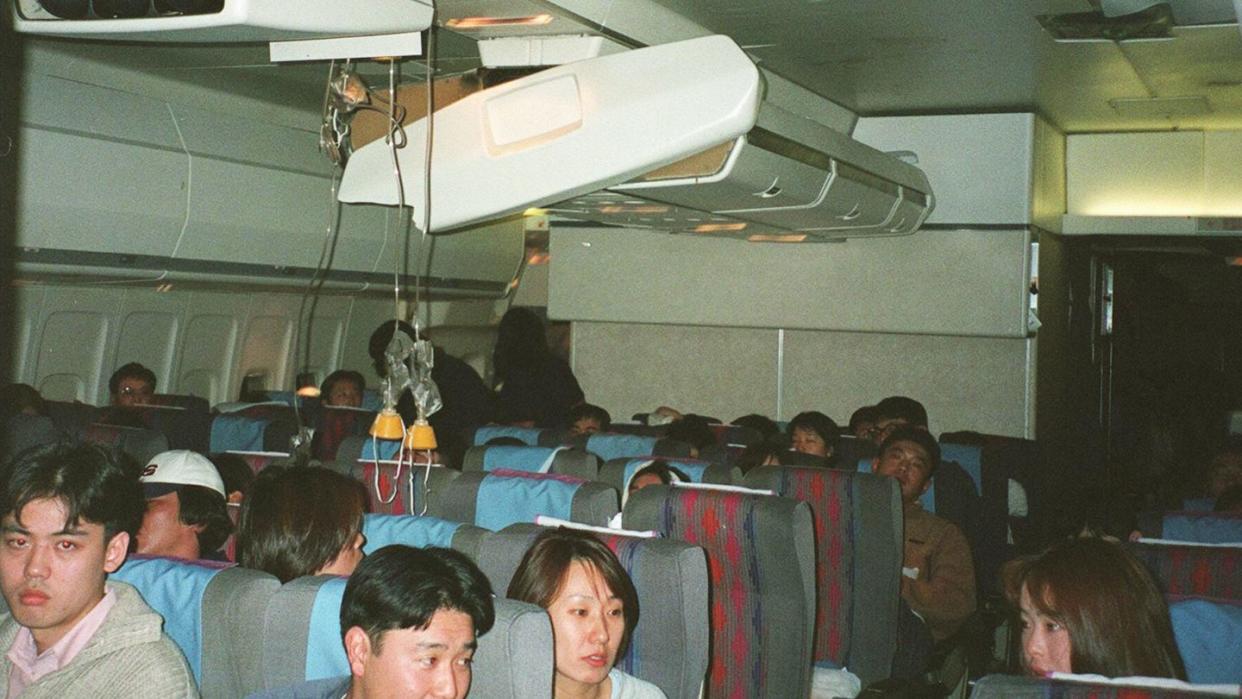
“Even though [severe CAT] is increasing, it’s still more rare, so you’re more likely to experience light turbulence even though it isn’t increasing as much,” Smith says. “So the main issue moving forward…is probably going to be dealing with more and more light turbulence, and it might result in airlines trying to avoid turbulence as much as possible.”
But how exactly do airlines intend to fight an airborne enemy they can’t even see?
A Turbulent Future
Although remote weather radar can’t spot clear-air turbulence, that hasn’t stopped engineers from trying to design a solution. The Japanese Aerospace Exploration Agency, or JAXA, developed a lidar detection system aimed at spotting turbulence up to 11 miles away. Although JAXA estimates that such a technology could reduce turbulence-induced injuries by 60 percent, adding extra weight to an aircraft is a big ask for most airlines.
While purpose-building laser-equipped airplanes might be a long-term solution, pilots aren’t flying blind in the here and now. Whenever a plane experiences sudden clear-air turbulence, the pilots submit a report, called PIREPs, detailing the wind shear anomaly and warning planes flying on a similar trajectory.
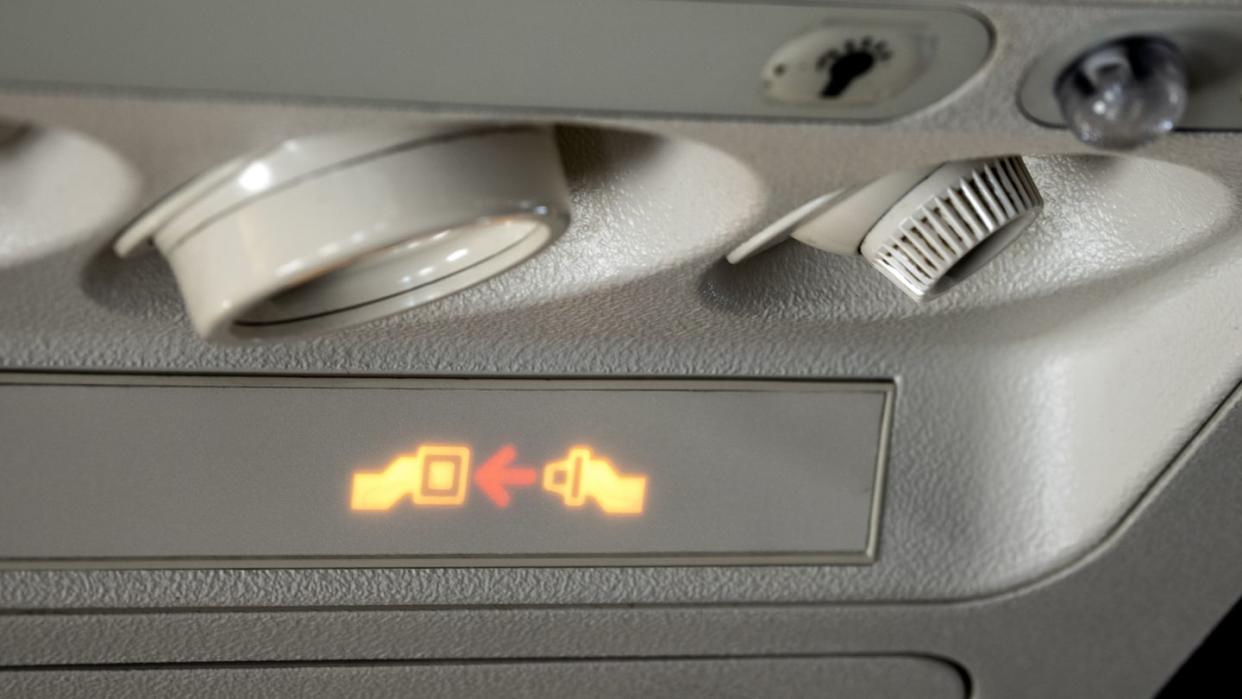
The International Air Transport Association (IATA) has also developed a Turbulence Aware database that uses National Center for Atmosphere Research software in an airplane’s avionics to report to the database when a plane’s Energy Dissipation Rate (EDR)—calculated from airspeed, angle of attack, and other parameters—exceeds a certain threshold. The test report contains the EDR value along with the aircraft’s position, altitude, wind data, and temperature, which is then shared with participating airlines.
While real-time data certainly helps pilots avoid the most severe turbulence out there, airplanes are more than capable of handling these unexpected swirls of wind. Airplanes are designed with a huge safety margin, and wings can handle loads 1.5 times stronger than what they’d ever experience during a flight. During their entire career, most pilots will never experience turbulence so severe that it bends a wing.
But just because a plane can survive a fierce run-in with clear-air turbulence, doesn’t mean airlines want to make flying through it a habit. Instead, in a warming world with an increasingly turbulent lower stratosphere, airlines might need to make a few adjustments to fly the smoothest route possible.
“We’re going to have longer flights and more convoluted flights…that means a lot more fuel emissions and a lot more waiting time at airports, because we’re going to want to make sure we avoid things,” Smith says. “Unfortunately, the most efficient flight routes are the most turbulent…what should we do? Should we have the most efficient flight routes, but also the most dangerous?”
Regardless of the answer, just fasten your seatbelt.
You Might Also Like
